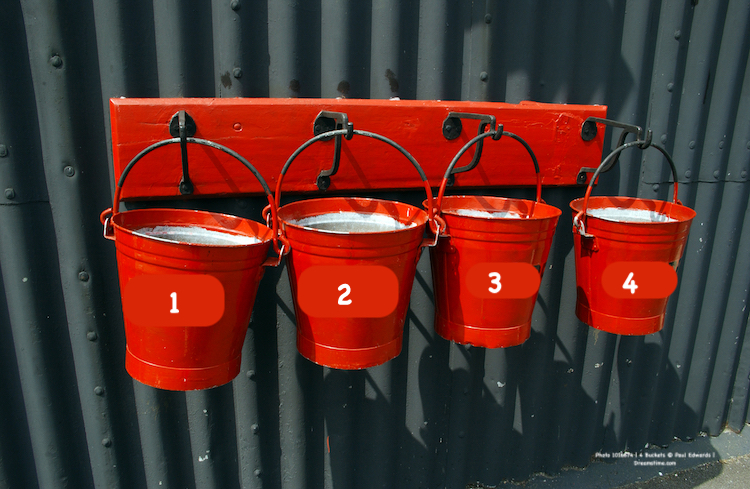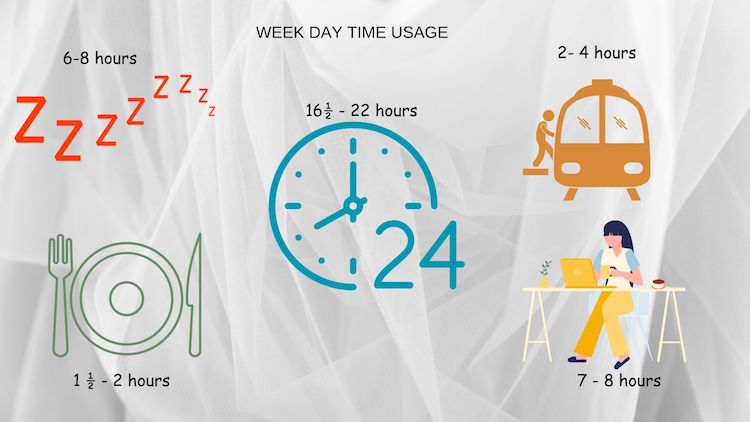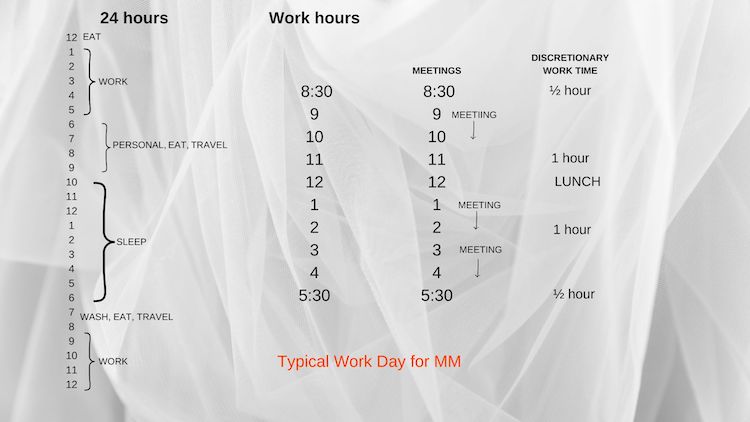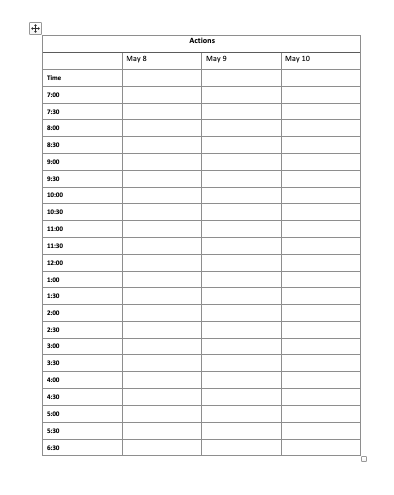
A tailor takes measurements and creates or uses a pattern to guide the cutting of materials that are roughly tacked together before testing the fitting on their client.
During the fitting the tailor uses pins and white chalk marker to capture adjustments needed.
Later scissors, sewing machine, needles and thread will be used to craft the materials into clothes that fit perfectly the body of the client.
A day in your life can be tailor-fitted to you using pins to stick certain actions in times, a white chalk marker to mark off time for other actions and a simple form to sew them in place.
But, first you will need measures. The measures in this case are to do’s. Each to do is an activity linked to an amount of time. A long list of todo’s is a tangled web to unravel. They often sit in our head like a swarm of buzzing bees, stressing and tiring us out.
Foundational activity
We need, first, to quieten the buzzing. We do this by removing the queen bee and placing her on paper. All the buzzing will then move out of your head. In practical terms we write down on paper or on a Google sheet or app of your choice every todo that is in your head. After MM have done this they all report, without fail, that it is a great relief. Later we will show how to do this every day so that there is no longer any buzzing in your head.
You now have the measures captured but you need to convert them into a pattern. To do this you will need to answer the following questions:
1. What to do’s must be done by a specific time? The word ‘must’ implies that it is something that just has to be done, no questions asked. ‘Specific time’ will limit you to when it must be done.
2. Of the remaining todo’s, filter them through an imaginary funnel which only allows those through that meet certain criteria. I am reminded of a conveyor that I saw in an clementine sorting plant in South Africa. It consisted of two side-by-side belts that at the one end were close together and then, as it extended they moved further apart. Clementines that had been picked were fed onto the conveyor and it automatically sorted them by size with the largest making it furthest along the conveyor. The criteria for your todo’s early in the funnel are optional or unimportant, next slightly wider , ‘must be done’, not urgent, thirdly, further along, ‘must be done’ and time-bound, finally very important to change for the future.
3. Having filtered the to do’s you can imagine that they fell through the widening conveyor system to fall into 4 buckets.
1. Can ignore
2. must be done sometime
3. Must be done by date/time
4. Very important to be worked on actively.

I need to explain #4.
As MM, the leader in us will be wanting to improve the way things get done or what gets done. These future dreams will only ever happen if we get into action, doing what will help bring them to exist in reality. While most todo’s come though your inbox, boss discussions and texts, as a result of circumstances and crises, your dreams about doing things better come from within you. Unfortunately, we have a tendency to see the incoming todos as more important, more immediate and so we can end up never doing what needs to be done to manage change.
Now that we have these buckets – what next?

We all have the same amount of time available to us.
If we live to 80 we will have 4174 weeks to live, if we hang in to 100 we will have 5218. Each week has 7 days and each day 24 hrs.
Out of our long list we need to select those todo’s that we need to get done first. Each ‘to do’ is an activity that you will be doing. Activities take time.
A look at our days
Some things we need to do every day are sleep, eat , wash.
If we do not work from home we have to add travel.
These items can take 12 hours out of the 24. If you have to be in the office for 8 hours and you travel, say 2 hours, that leaves 2 hours for personal time.

Do the following: Next to the top activities that made it to the end of your conveyor filter, add an estimate of the time in hours that the activity will take. If there is a deadline then asterisk the todo and add the number of days available.
You now have all the measures you need – except one!
Open your calendar and see how many meetings are blocking off hours from your discretionary time.
The spaces between the meetings are the discretionary time into which you have to book your todo’s, starting with the end-of-the-conveyor belt todo’s.
A MM can be lucky to have 3 hours discretionary time in a day. All the more reason to do the planning above.
There are of course weekends and also sleep-time robbing work done at home. Using up all this time for work is bad for health, relationships and work quality if done frequently.

A daily sheet I plan each night.
My todo list is separate and still on paper. I love seeing the crossed out todos and so I have quite a few sheets clipped together with most crossed out. Great seeing the progress.
Start by filling in the meetings and any other commitment you might have.
You can now see your discretionary times. probably scary the first time you do this. Look at the prioritized todo list with the guessed times. Slot them into your day. as possible. You now have a plan for the day to follow.
It is probably obvious that meetings are the biggest stealers of your discretionary time. My next article next week will look at way to reduce meeting time. Online meetings that increased exponentially thanks to Covid have made meeting time flourish!
STICK TO YOUR PLAN as best you can. Things often disrupt your well thought out plan.

FOCUS: When you are working on a specific task, block off all else. Stop notifications, put your phone away in a drawer, put it on silent mode, do not allow interruptions and work non-stop for at least 1/2 hour at a time with a 5 minute break in-between. During that break get up stretch, walk around, get coffee, go to the washroom, There is research that shows that this movement keeps the blood flowing to the brain better and that results in easier and better concentration.
If you are in open plan situation or working from home devise a DO NOT DISTURB sign or symbol and ask people to respect that at all times.
OBJECTIVES: Every evening, last thing before you stop work:
– remove completed todo’s
– Do a brain dump adding to your paper or digital to do list
– Run the new todo’s through your conveyor filter
– Select the items that you will work on tomorrow in your discretionary time.
– Block off needed time.
Having objectives for what is possible during the day provides a chance for celebration and joy at the end of the day. Science shows that a sense of achievement whether small of large gives a sense of joy.
In his book Flow, Mihaily Csikszentmihalyi shares the difference he observed between two workers on an assembly line. They both had the same repetitive job. Tightening bolts. One loved his work and was fully engaged, the other the opposite. As he studied the two he discovered that the engaged worker had specific objectives in mind as what the bolts he was tightening would look when he finished the tasks. He aligned the heads of the bolts so that they all pointed in the same direction. The grooves were all pointing to 12 o’lock. The feedback he got from the perfectly aligned bolts gave him a slight jolt of joy each time he achieved the objective. And that made all the difference.
You can get the same jolt by setting reasonable objectives to achieve each day.

